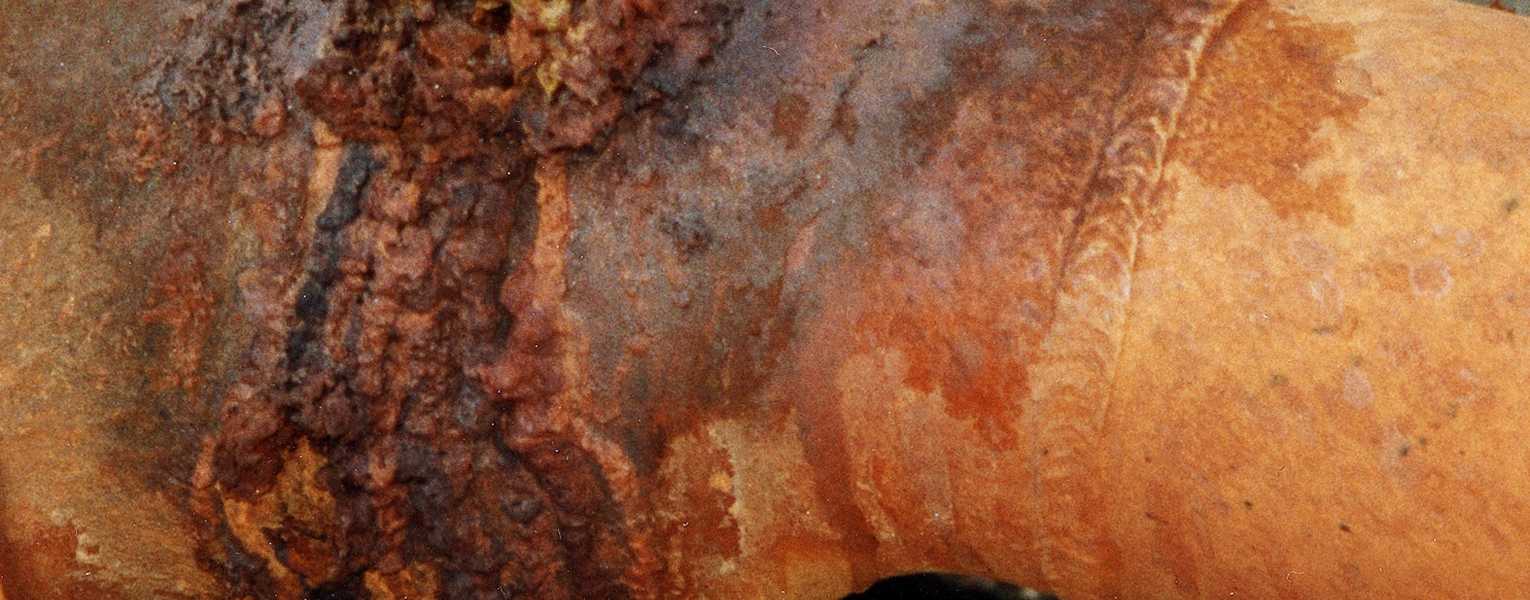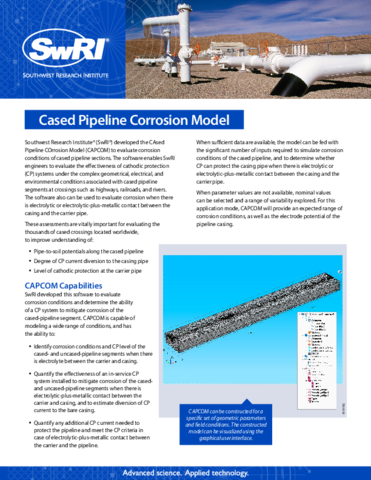Internal corrosion of pipeline is a significant problem in oil and gas transmission systems. Under normal operating conditions, these pipelines carry under-saturated gas with no protection or inhibition and rely on dehydration of the transported fluids to prevent corrosion. Phase instabilities and other process upsets can result in near-saturated gas or some liquid water holdup, leading to water accumulation in some parts of the pipeline. Based on probabilistic risk analysis, SwRI developed and validated practical tools to determine the likelihood of internal corrosion threats for certain types of operating conditions. SwRI scientists and engineers perform internal corrosion risk analyses that include determining the evaporation time of residual hydrotest water in challenging areas of pipelines, and water stream length from inlet branches of pipelines operating at elevated temperatures.
Specific areas of work include
- Under deposit corrosion assessment-monitoring and corrosion inhibitor performance evaluation
- Wet and dry gas internal corrosion direct assessment
- Apply NACE standards SP0206 – Internal Corrosion Direct Assessment Methodology for Pipelines Carrying Normally Dry Natural Gas
- Microbiologically influenced corrosion characterization


